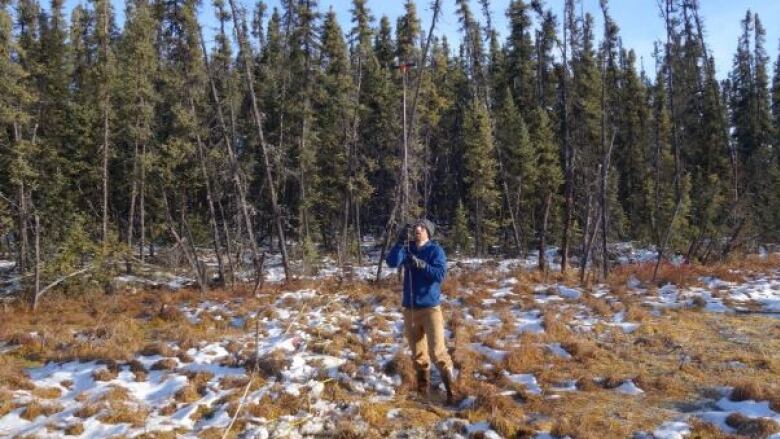Don't like the rain? Neither does permafrost, researchers say
Researchers in Alaska found more precipitation means more permafrost thaw

Wet summer weather is not just a holiday inconvenience it mayalso be causing northern permafrost to thaw faster, according to new research out of Alaska.
"It's something I think people haven't looked at or modelled before," said Tom Douglas, and environmental engineer with U.S. Army Corps of Engineers' Cold RegionsResearch and Engineering Laboratory (CRREL), and a co-author of the study published recently in the journal Nature.
Douglas said he was at a meeting a few years ago with other permafrost researchers when talk turned to the recent rainy summers in Alaska.
"Everybody said, yeah,these last couple years we've just seenso much more active-layer seasonal thaw [ofpermafrost] than in others, and people were thinking it's got tobe from all this extra rain we had, leading to thaw," he recalled.
"But nobody had come to put the whole story together."
The researchers focused on two summers that were wetter-than-normal in Alaska 2014, which saw the most cumulative precipitation in 91 years, and 2016, whichsaw the third-most cumulative precipitation.
They found that more summer rainfall led to "enhanced permafrost thaw" at several different sites.
According to Douglas, it's a pretty straightforward relationship.
"Rain ...has that thermal mass, that water, that can trickle down through the soil," he said.
"When it hits 0 C soil, it's going to warm it up and lead to thaw."
Fabrice Calmels, a permafrost researcher at Yukon University, has also observed an apparent relationship between summer rainfall, and observable permafrost thaw the following year.
He recalls the wet summer of 2016, and doing fieldwork in central Yukon.

"We were miserable because we were walking in the Tombstone area and it was pouring everyday," he said.
"When we came back in spring 2017, we saw that there was a new landslide developing ... we think that it was because of the wet summer that we had the year before."
Climate change means wetter summers
Calmels said it's an important relationship to understand especially since climate change modelspredictthat northern summers will be wetter in the future.
"What we expect in the next years, due to climate change, is that first, the atmosphere will continue to warm,which is not very good for permafrost,and second, that we should have more precipitation," he said.
Douglas says there's more research to be done, to get a fuller picture of how precipitation affects permafrost. He says researchers were lucky to have two very wet summers in recent years to focus on.

"Our data was just collected during kind of a couple of lucky anomalous events," he said.
"I hate to say it because of fire risk, but we need a really dry summer. It would be interesting to find out if during a dry summer, do we basically not thaw down as much?"
That's a question that won't be answered this year, he said.
"We've had another wet summer, so I thinkwe're just gonna see more thaw."
With files from Claudiane Samson and Leonard Linklater












_(720p).jpg)


 OFFICIAL HD MUSIC VIDEO.jpg)
.jpg)



























































































